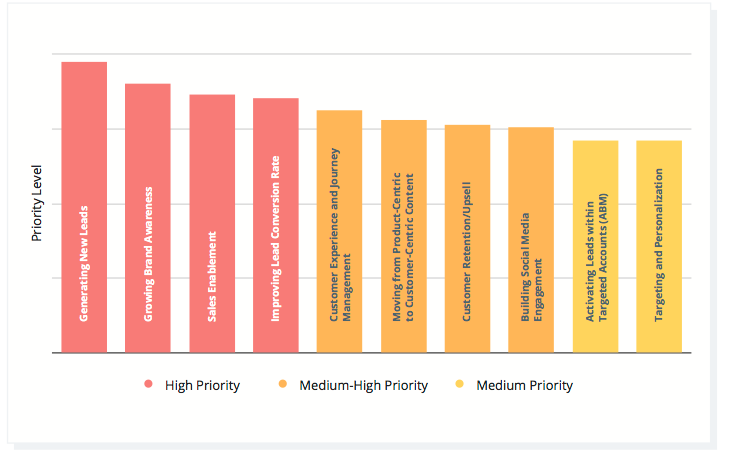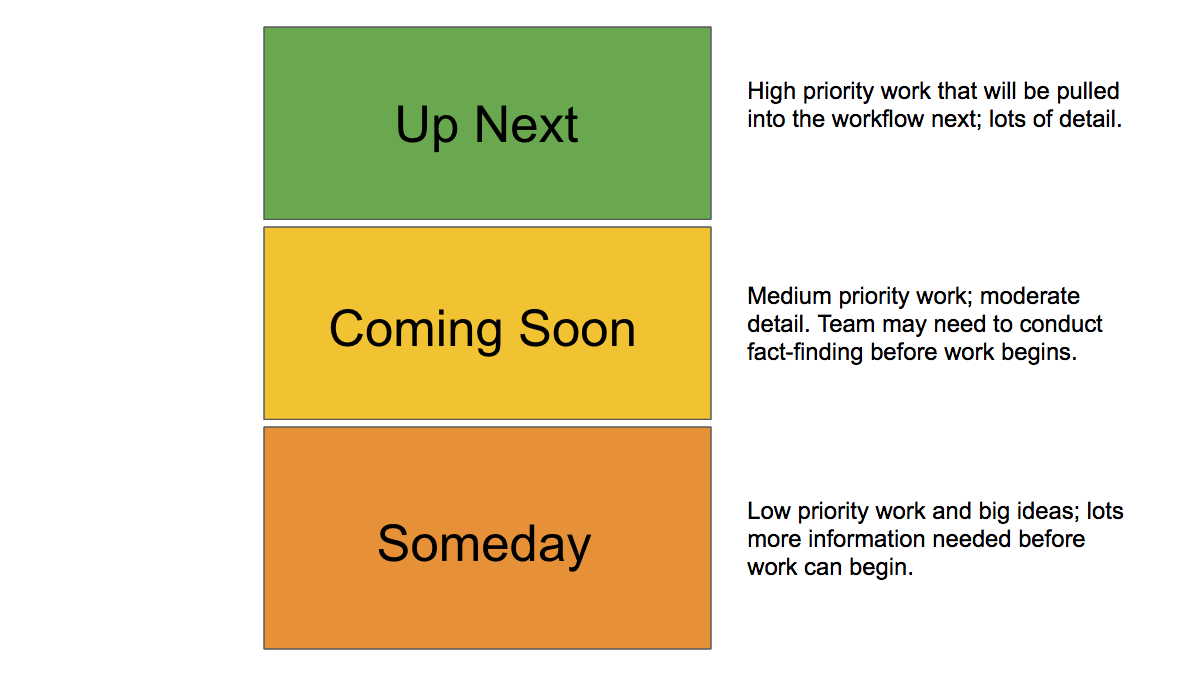I’m a list maker. Always have been.
I think I find lists appealing because they get all the possibilities out in one place where I can see them.
But traditional lists, while satisfying to create, only tell me what I could be doing. They don’t reveal what I should be doing.
For that, I need to add priorities to my list. But here again, even a perfectly prioritized list won’t solve all my problems. Ed Batista, executive coach and instructor at the Stanford Graduate School of Business, puts it like this:
“[P]rioritizing accomplishes relatively little, in part because it’s so easy to do…for the most part it’s a straightforward cognitive task. When looking at a meeting request, a to-do list, or an email, we have an intuitive sense of how important it is, and we can readily compare these items and rank-order them.”
What the process of prioritization leaves out is the difficult decision not to do something. Realistically, we aren’t ever getting to the things at the bottom of our to-do lists, and keeping them on the list just dilutes our focus and makes us feel ineffective.
Recent results from the B2B Content Strategy & Operations Benchmark seem to show that marketers are struggling with exactly this issue:

When presented with a list of options, only 17% of the respondents named anything on the list as a low priority.
There’s no way we can realistically grow brand awareness and enable sales while also upselling existing customers and building our social media engagement.
Clearly, we need some help prioritizing, so I want to explore an Agile tool that can provide us some guidance: the backlog.
But we need to go further than just understanding what a backlog is. In Agile marketing, our backlog needs to meet three key requirements to be effective:
- Limited in size and scope
- Created by the right people
- Refined regularly
The Power of the Marketing Backlog
The backlog is one of the simplest and most powerful tools in the Agile toolbox. In essence, it’s a prioritized to-do list for the whole team.
When the team is ready to take on some new work, they go to the backlog and pull the top item. Leaders and stakeholders make sure the backlog is accurate and reflects organizational priorities, so marketers pulling items are always picking the highest value work.
Backlog items at the top are going to be worked on soon, so they have more detail and specificity. Those lower towards the bottom aren’t coming up anytime soon, so there’s no need for the team or its leaders to investigate them yet. They might not ever make it to the top, so spending time on them before they’re on deck isn’t a good use of time.

This is a good start, but clearly, a prioritized to-do list isn’t enough, because, as Batista reminds us, “After we prioritize, we act as though everything merits our time and attention, and we’ll get to the less-important items ‘later.’ But later never really arrives. The list remains without end.”
So the backlog needs some additional constraints to work effectively for priority-challenged marketers.
Limiting the Size of the Backlog
The first adjustment is to put limits on how much work can go into the backlog. If you work in a particularly volatile environment, I recommend limiting your backlog to one month’s worth of work. Teams with a more predictable workflow can get away with two months.
This limit needs to be represented by a concrete number. Otherwise, you’ll end up arguing about whether a new idea or project could possibly fit within the next month or two. Agile teams call this a WIP (Work in Progress) limit, and it forces us to triage the amount of work we take on.
Let’s say we impose a limit of 50 items on the marketing backlog for the next two months, based on how much work we typically release in that time. Once we’ve filled it up with work, we can’t take anything new in without booting out another project.
Now when someone comes to us with a new idea or a request, we’re forced to make a choice. If we take it on, something else has to come out.
No more saying “yes” to everything.
This act of triage is uncomfortable but vital for a marketing team to funnel its energies into the right places at the right times.
Getting the Right People Involved
Once we’ve got reasonable size limitations put on our backlog we need to make sure it contains the right work. That means getting well-informed people together to fill it.
This group typically encompasses representatives from the marketing team itself, their functional managers, and strategic thinkers, such as a director, VP, or CMO. Depending on how your department is structured, you may also want to include stakeholders outside of marketing.
As you can imagine, getting all of those people to agree on the same priorities is no easy task.
Even among content creators, marketing operations, and marketing leaders, we struggle to pinpoint the most important parts of our work.
The B2B Content Strategy and Operations Benchmark indicated that, for example, 68% of content creators rank brand awareness as a top priority, while only 48% of marketing operations members made it their top choice.
Consensus may be tough to reach (engage a facilitator in this meeting if you can’t make any headway), but once you’ve got it, you’ll be amazed at how much more effective marketing’s output becomes. The permission to say “no” when things don’t align with agreed upon objectives is a powerful thing.
The Role of Marketing Owners
While all these contributors have a say in what the backlog ultimately looks like, there should be one person who makes the hard decisions about what stays in the backlog and what gets kicked out when new requests come in.
On a software development team that would be the Product Owner, but marketers aren’t often building a product.
Instead, we designate this person a Marketing Owner, and they have the final say when it comes to what the marketing team is working on.
A director or similar level manager can fill this role, as long as they are sufficiently informed and empowered to make judgment calls. The most important characteristic of a good Marketing Owner is a willingness to protect the team from frequent interruptions so they can focus on doing the right work at the right time.
When to Groom the Backlog
The final component of a good marketing backlog is one that’s up to date. This means that you’ll need to meet often for what’s known as backlog grooming or refinement, essentially a meeting that reshuffles the backlog based on new information, new requests, and completed work.
Your schedule for backlog grooming will vary widely depending on your situation, but during your early days of using a backlog, a once-per-week session may work best.
Of course, if you have twenty people to wrangle and few of them can commit to this frequency, you may have to settle for more time between backlog refinement sessions.
That’s fine too, as long as your Marketing Owner has permission to make on-the-spot decisions about the backlog in the interim.
Rebalancing Deliberately through a Backlog
Clearly, marketers are struggling to prioritize our work. We want to do everything but simply can’t fit it all into an already packed calendar.
Without a system for triaging our work, we fall victim to what Andrew Davis calls CMO pizza: trying to split the same annual budget into smaller and smaller slices.
An effective Agile marketing backlog can save us from unprioritized pizza purgatory, allowing us instead to limit our work and focus on the most important projects, one by one.

